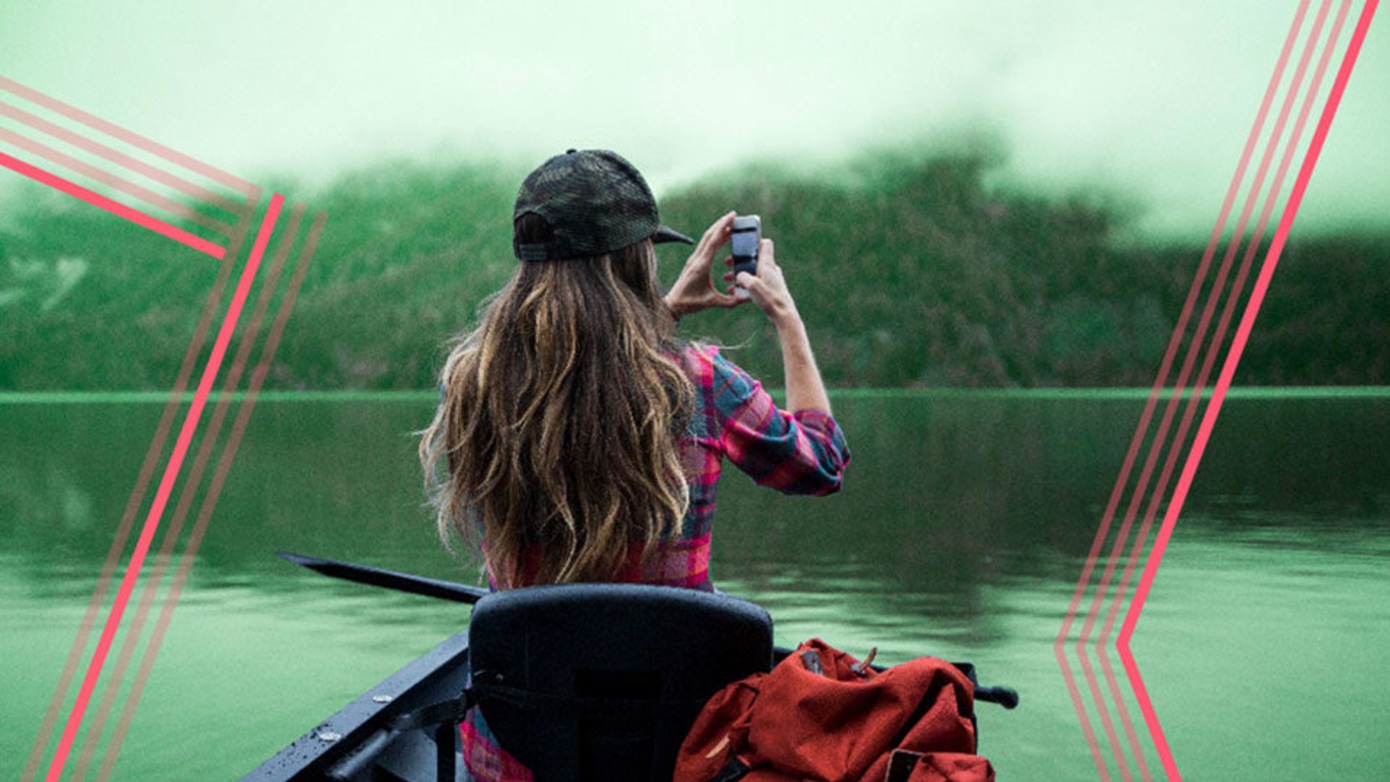I survived wilderness survival class and so can you
Truth be told, I’ve always been more of an indoor kid — strenuous outdoor activities aren’t really my thing. I enjoy being outside and sitting or eating or reading or walking slowly, but nothing that would constitute an “adventure sport” or require any sort of special gear.
Yet I was intrigued by REI’s new Force of Nature campaign to get women outside since it first launched last month. They had me with their combination of gender equity and empirical evidence, citing a survey that found that more than 85 percent of all women surveyed believe the outdoors positively affects mental and physical health, happiness and overall well-being, yet 60 percent of women say that men’s interests in outdoor activities are taken more seriously than theirs.
While my idea of a fun Saturday does not involve schlepping through the rain and mud walking uphill, I do like knowing how to get myself out of jams, so when I saw REI offered a wilderness survival class, I signed up. Also, given our current political and health care climate, it can’t hurt to have a few survival tricks up my sleeve just in case.
Two days before class, I noticed rain in the forecast for that day, so I emailed the instructor asking if wilderness survival class would be canceled because of the rain. As it turns out, wilderness survival class is a rain-or-shine event.
The class consisted of 10 seasoned outdoorswomen (plus one participant’s mother), me and our instructor, Yan. Like others in the class, I (wrongly) assumed that we’d have a female teacher for our day of female empowerment survival — some students even came ready with specific questions about the best ways to urinate as a woman. To his credit, Yan (who is male) handled all the questions — including mine about starting fires with my glasses and very specific techniques for removing ticks — flawlessly.
Yan taught us everything you’d expect to learn in a wilderness survival class, from how to layer for different seasons to how to extract potable water from leaves to how to build a shelter out of sticks like in the movies. Here are 10 of my favorite things that I learned.
1. You can teach a cat to use a toilet, but don’t teach it to flush
I actually picked this tidbit up from another student in the class who is attempting to train her cat to go with her on hikes. Apparently, if you show them how to flush themselves, they become obsessed with pushing the handle, leaving cat owners forced to disable their toilets.
2. Tampons are great for starting fires
At the beginning of class, as several of us gave an (unsolicited) rundown of the menstrual supplies we were carrying, Yan told us that tampons actually come in handy for starting fires — especially when it’s hard to find dry sticks and leaves.
3. If you are backpacking alone, wear a bear bell
Sure, this depends on whether you are backpacking in a location with bears, but my philosophy is to live every moment as if you could encounter a bear, so I like this tip. The thought behind this is that bears don’t like it when you sneak up on them, so if you attach a bell to your backpack that dings when you walk, it will alert the bears in proximity to stay away.
4. Doritos are highly flammable
During the segment where we talked about the kinds of snacks to bring with us on our travels, I was surprised to hear that corn chips like Doritos were on the list. Turns out, it’s not for their nutritional value. They are also good for starting fires — just in case no one in your group has a tampon available.
5. Sassafras helps treat poison ivy
Not only is it fun to say, but sassafras is a plant that tends to grow near poison ivy and can be used topically to treat a poison ivy rash.
6. If you’re lost on the east coast, find water
This actually makes a lot of sense: if you lose your way while hiking somewhere near the east coast, just find a river and follow it downstream. Eventually you will run into civilization.
7. Buy the most local map possible
For hiking trips, don’t rely on Rand McNally or National Geographic. Your best bet is to buy a map directly from the park made by a local cartographer most familiar with the area. That way if anything changes — new roads, dried-up bodies of water — the map is more likely to reflect that.
8. Birds sing before it rains
If you don’t have cell service or ran out of battery and don’t have access to your weather app, the sound of birds chirping is a good indication that it might rain soon.
9. You can get water by wiping your neckerchief on the morning dew
I was surprised and delighted to see that our instructor was wearing a neckerchief at the beginning of class — I had just assumed that this was some sort of Boy Scout stereotype. I know they serve a whole range of purposes (like covering your nose and mouth in a Wild West dust storm), but I learned that if you’re short of water, you can take your neckerchief and run it over some grass in the morning to collect the dew. I’d have to be pretty desperate to want to drink neckerchief dew water — especially given that a substantial portion of it would be comprised of sweat — but it’s nice to know that it’s an option.
10. No part of me wants to be in an actual survival situation
Hiking and camping and activities that involve being far away from civilization aren’t my cup of tea, and that’s totally fine. My sister just hiked part of the Appalachian Trail — willingly — and so I know people who enjoy this type of recreation; I’m just not one of them. I prefer to experience nature walking through it slowly and then safely returning to a sturdy shelter at night, far away from bears. But at least now I have a few wilderness survival strategies beyond those I read in The Boxcar Children book series.
For more information on this and other Force of Nature classes for women, visit the REI website.
Originally published on SheKnows




comments